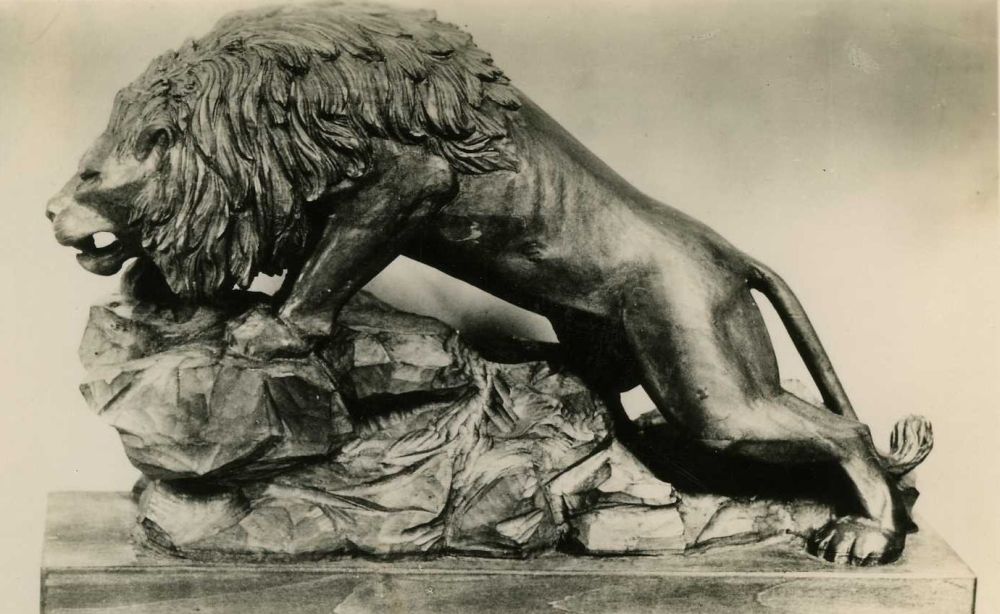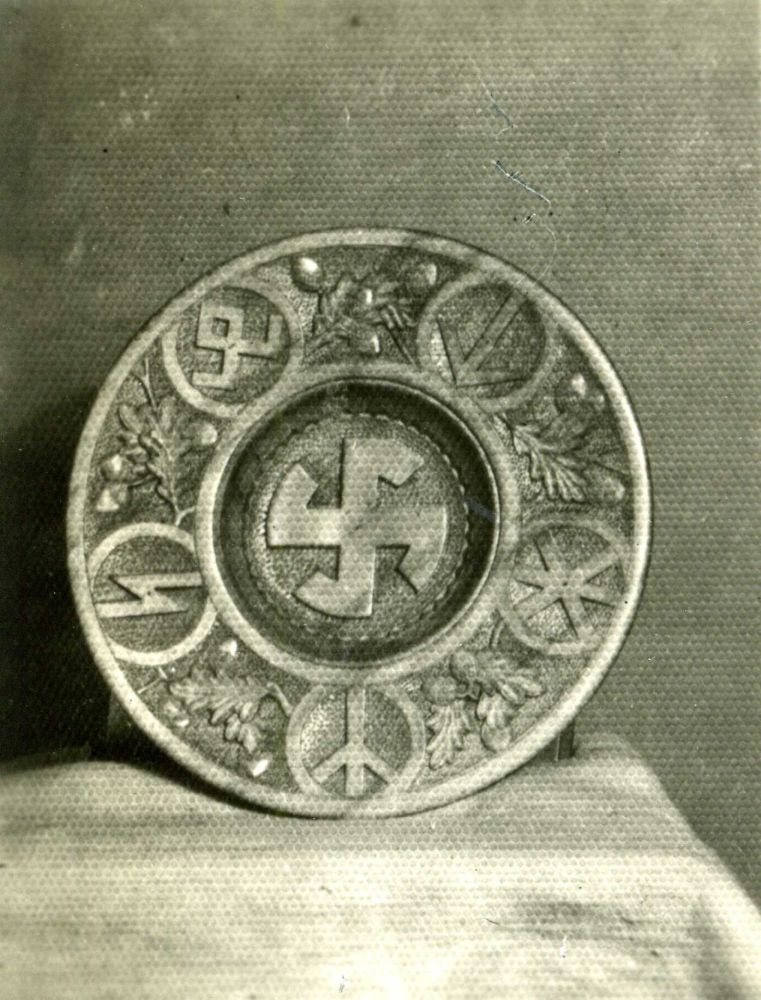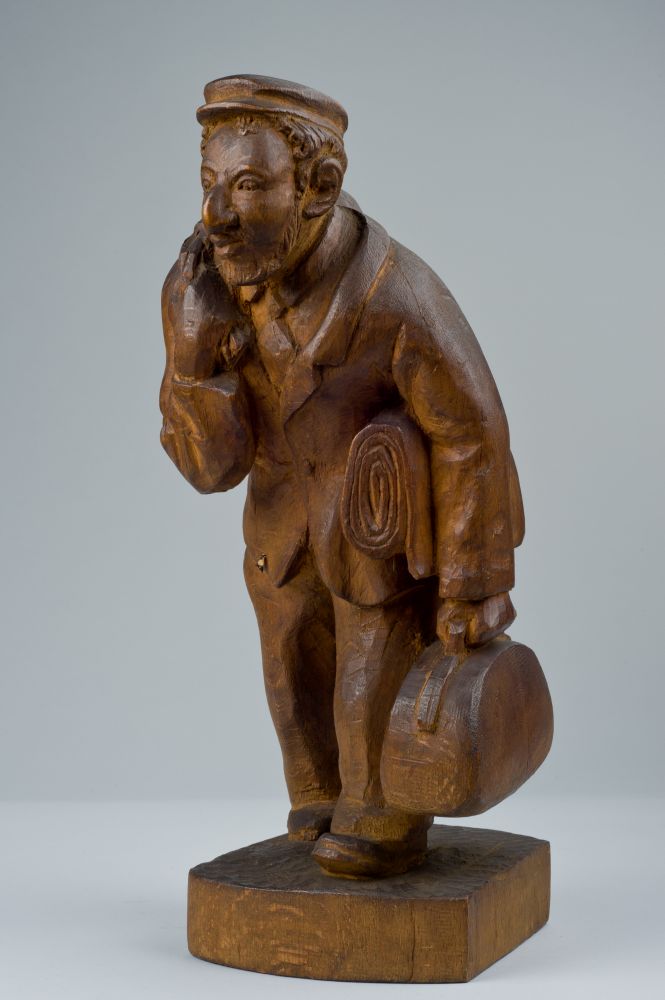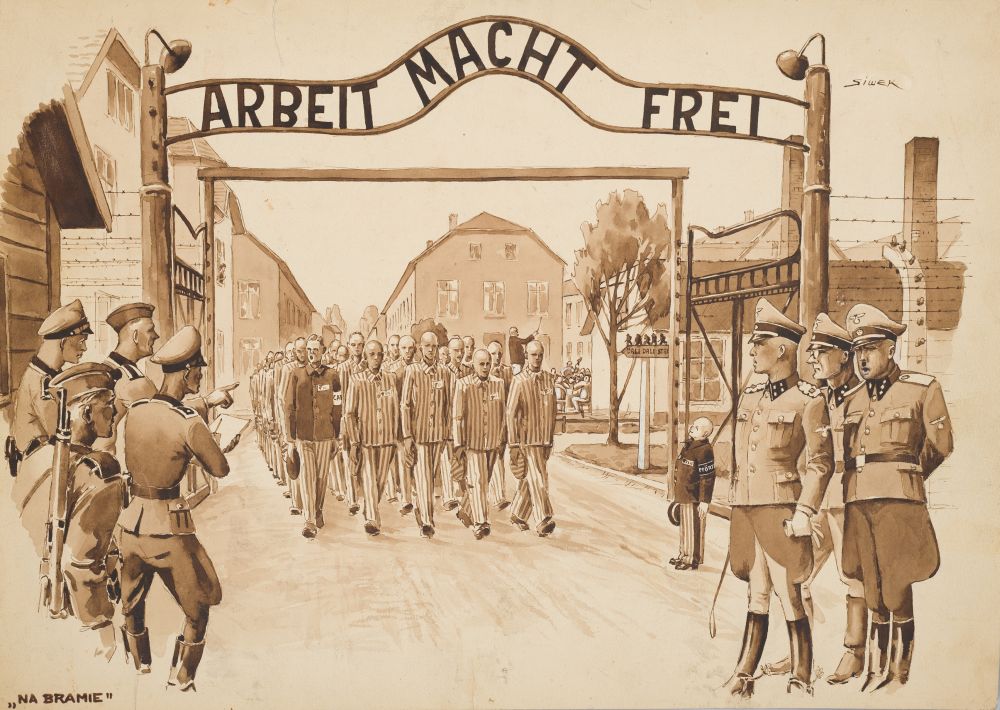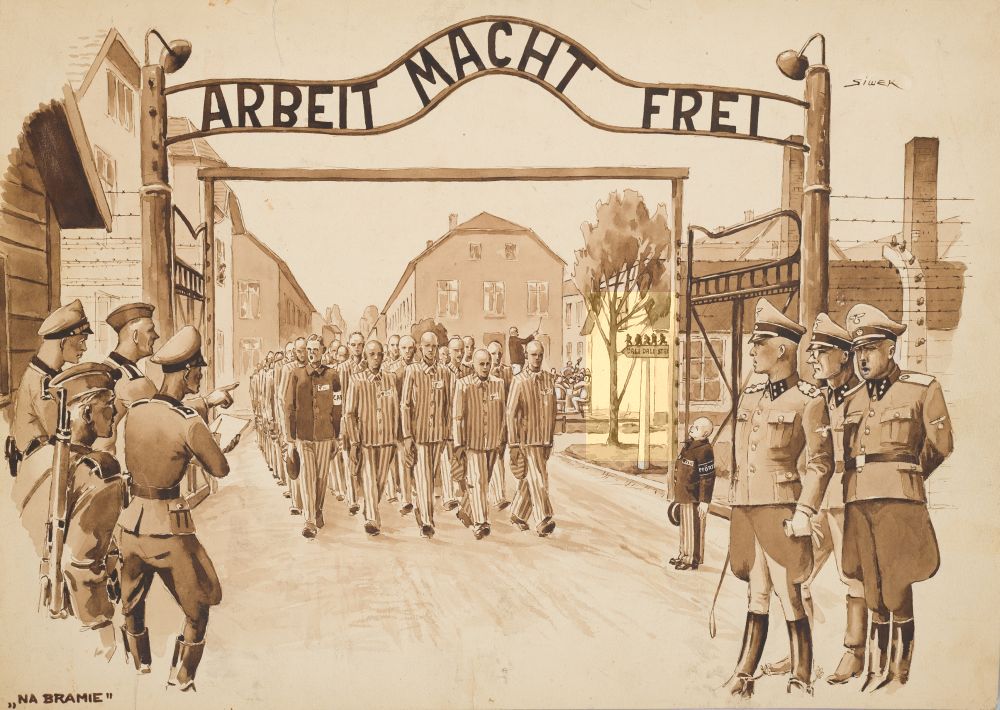The inmates employed in the carpentry shop, and later in the sculpting shop hived off from it early in 1941, not only worked to satisfy the basic needs of the camp, but also designed and made works bordering on craft and sculpture to official commissions. They included the Dali-Dali-Strasse and Birkenallee road signs in the camp, decorative chandeliers, and ornamental plates and mugs. Moreover, the sculptors made many private orders for the SS officers and Kapos, in this way reaping assorted benefits for themselves or for the entire work detail. Their products included boxes and caskets, decorated trays, plates, cigarette holders, inkwells, sculpted photo album covers, and figurines and bas-reliefs. The inmates working in the sculpting shop mainly came from Zakopane: Antoni Kupiec, Bolesław Kupiec, Izydor Łuszczek, Bronisław Czech, Stefan Didyk (called the “sculpting elite” by their colleagues), together with Tadeusz Lech, Wincenty Gawron, Stanisław Gutkiewicz, and Franciszek Targosz (for a very short time). Among them were artists less skilled in sculpting, as a professional painter Wincenty Gawron. He designed objects and decorative motifs that were later used by the other team members: “Because I knew the anatomy of rose flowers and leaves well, I prepared a drawing and convinced Bronek Czech to make use of it. Everyone liked the casket with roses manufactured according to my design, sculpted beautifully by Bronek, and from then on, every sculptor turned to me with their design problems.”

